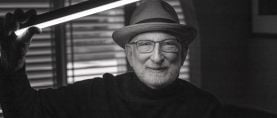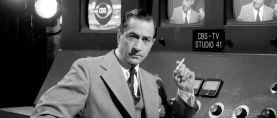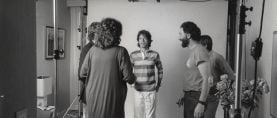
Why Our Solidarity Is Now Essential
We must hold this trust in our work. Although we cannot practice it today because our world has shut down, it will open up again soon, and our conviction that we do what we love will make us rise again.
Last month, I promised you the follow-up column on the Art of Cinematography. I announced it as “In the Doghouse” and started writing the somewhat satirical interpretation of how my monitor tent on set is sometimes considered “the doghouse,” and how our position as cinematographers on set and in postproduction often parallels the life of Snoopy. However, while I was writing that, the world turned upside-down and it seemed superfluous to write about that subject at the moment. Instead, I had people asking me — as well as wondering, myself — if cinematography is still relevant in the current state of the world. Meanwhile, I have seen colleagues disappear in quiet retreat, driven by the unrelenting mandate to isolate. Yes, it’s a human condition; in times like these, we resort to the basics of family and personal well-being, and suffer the result of social isolation and the fear of economic hardship.
However, I could not escape the thought that we have been here before. The Spanish Flu, or the 1918 flu pandemic, began in January of 1918 and lasted three years. 500 million people were infected, making it one of human history’s most deadly disease outbreaks. It is estimated that 17 million to 50 million people died, though the figure may actually be closer to 100 million.
What is of interest to me is that 1918 also, in a way, marks the beginning of cinematography. During the preceding years, camera operators had predominantly documented the various atrocities of World War I.
As noted in the book American Cinematographers in the Great War, “The impact of the First World War cannot be fully comprehended by reading statistics about the millions of casualties. These are in the end only figures. Some images tell a far more striking story. After four years of fighting, when on 11 November 1918 the guns fell silent, the frontline area between the English Channel and the Swiss border had changed into a completely devastated landscape. Treeless, scarred by mine craters and endless trenches zigzagging through muddy fields and ruined villages — these relics from the Great War as seen from a bird’s-eye view resembled an horrendous scene from Dante’s Inferno.’
Later, in the year the war ended, there was an influx of fiction silent movies. 1918 is the year we saw films such as D.W. Griffith’s Hearts of the World, Ernst Lubitsch’s Carmen, and Charlie Chaplin’s A Dog’s Life — just to mention a few of the escapist movies, romances and comedies trying to move our thoughts to better, future times. There was a yearning for positivism that, despite the disastrous onslaught of the Spanish Flu, persevered against all odds — like recognizing suffrage, women’s right to vote.
The following year, the American Society of Cinematographers was founded under the motto “Loyalty, Progress and Artistry” — with Loyalty first, following a worldwide trend of revisionism at the time. The ASC founders also changed the title of “cameramen” to “cinematographers” because they wanted recognition as artists. And they supported “progress” to advocate education.
In the past 100 years, we have endured the Second World War, lived through Vietnam and withstood 9/11, and all in all, the world population banded together and came out stronger.
Today we are facing a similar situation. Fear and uncertainty have taken hold of all of us. But we can find solace in history — that the human condition will survive and prevail. And yes, in what we do as individuals, as artists and technicians, we must hold this trust in our work. Although we cannot practice it today because our world has shut down, it will open up again soon, and our conviction that we do what we love will make us rise again. In the meantime, it is important that we stay in touch, communicate, and talk about the past and the future.
I want to prepare for the day when my front door is wide open again so I can let the dog out.
Kees van Oostrum
ASC President







